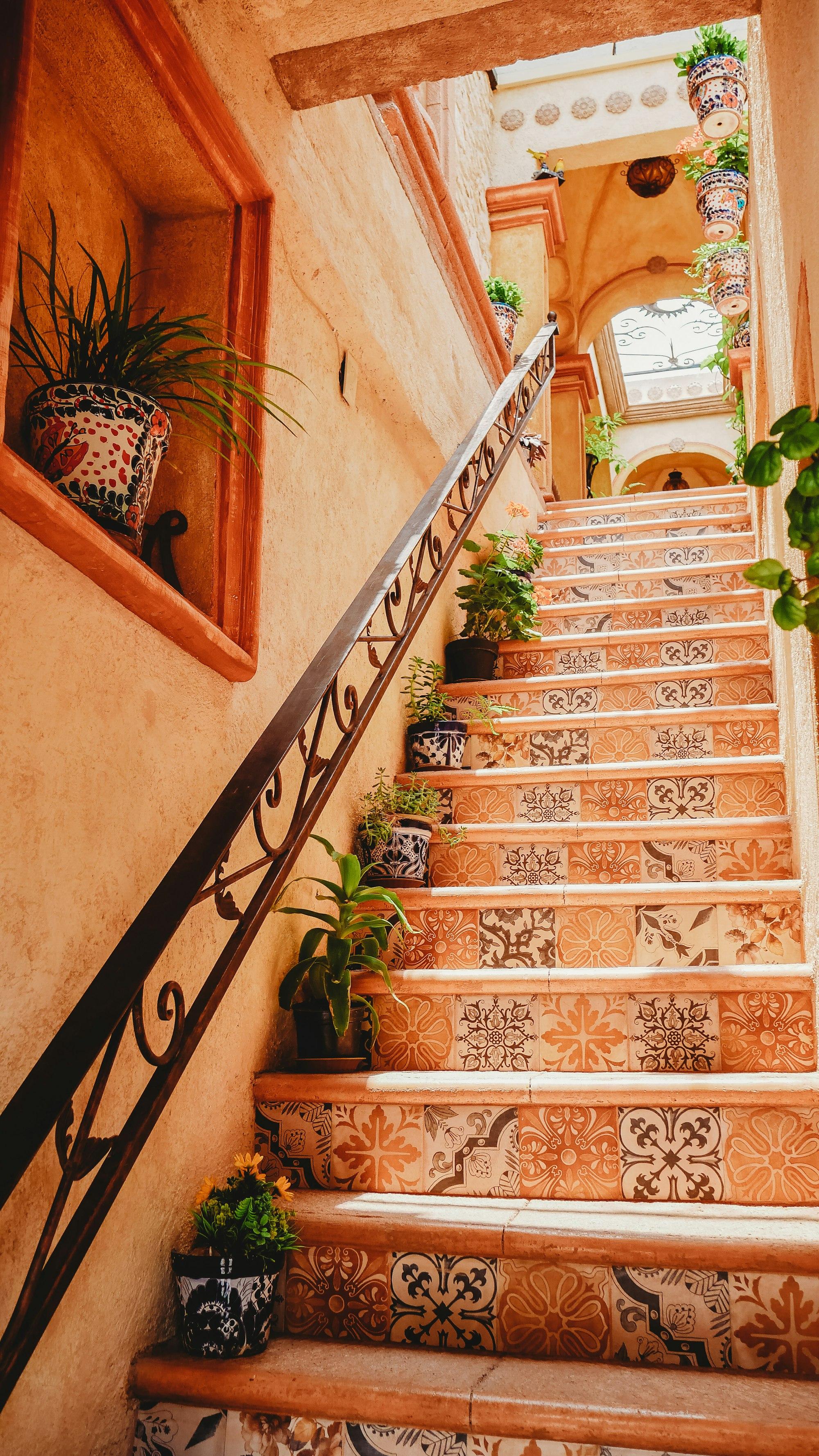What is a Banister?
Banisters: the unsung heroes of staircases that prevent tumbles and add architectural pizzazz. These handrail systems do more than just support your ascent; they're the silent guardians of your home, blending safety with style in every step.

Photo by Roberto Carlos Román Don
Ever caught yourself sliding down the stairs on that smooth, curved piece of wood, channeling your inner child? Or perhaps you've gratefully grabbed onto it while navigating stairs in heels after a night out? That, my friend, is a banister – the unsung hero of staircases everywhere. It's part safety feature, part architectural element, and, let's face it, part impromptu playground equipment for the young (and young at heart).
But what exactly is a banister, and why does it deserve more than just a passing grip as we rush up and down stairs? Let's climb into the world of banisters and uncover the support and style they bring to our homes.
What is a Banister & Why Do You Need One?
A banister, in its simplest form, is the handrail and supporting posts that run along one or both sides of a staircase. It's like the safety belt of your stairs, providing support, stability, and a touch of elegance to what might otherwise be a rather mundane ascent or descent.
But why do you need one? Well, unless you fancy your home doubling as an obstacle course, banisters serve several crucial purposes:
- Safety First: They provide crucial support for people climbing stairs, preventing falls and offering stability.
- Aesthetic Appeal: A well-designed banister can be a striking architectural feature, enhancing your home's overall look.
- Legal Requirement: In many areas, banisters are required by building codes for staircases above a certain height.
- Defining Space: They help to visually separate the staircase from the rest of the room, creating a sense of structure.
Think of a banister as the frame to your staircase's masterpiece. It's not just functional; it's an integral part of your home's design, much like how an étagère can elevate a room's style while serving a practical purpose.

Banister vs. Railing: What's the Difference?
Now, you might be wondering, "Isn't a banister just a fancy word for a railing?" Not quite! While the terms are often used interchangeably, there are some subtle differences:
- Banister: Typically refers to the entire system of handrail, newel posts (the larger support posts at the ends and turns of a staircase), and balusters (the vertical posts between the handrail and stair treads).
- Railing: Usually describes just the horizontal piece that you hold onto, whether it's on a staircase, balcony, or porch.
Think of it this way: all banisters include railings, but not all railings are part of banisters. It's like the square-rectangle relationship of the architectural world.
Types of Banisters
Banisters come in various styles to suit different architectural designs and personal preferences:
- Traditional Wood: Classic and warm, wooden banisters offer timeless appeal.
- Modern Metal: Sleek and minimalist, perfect for contemporary homes.
- Glass Panels: Create an open, airy feel while maintaining safety.
- Wrought Iron: Ornate and sturdy, ideal for adding a touch of elegance.
- Mixed Materials: Combining wood with metal or glass for a unique look.

Choosing the Right Banister for Your Home
Selecting the perfect banister is like choosing the perfect sofa – it needs to balance function, style, and your personal taste. Consider:
- Your Home's Style: A Victorian-style home might call for an ornate wooden banister, while a modern loft could shine with a sleek metal design.
- Safety Needs: If you have young children or elderly family members, consider designs with closer balusters or glass panels to prevent falls.
- Maintenance: Wood requires more upkeep than metal or glass but offers warmth and character.
- Budget: Banisters can range from affordable to high-end luxury. Set a budget before you start shopping.
Maintaining Your Banister
To keep your banister in top shape:
- Wood: Regular dusting and occasional polishing will keep it gleaming.
- Metal: Wipe down with a damp cloth and dry thoroughly to prevent rust.
- Glass: Use a glass cleaner regularly to keep it sparkling and fingerprint-free.
- All Types: Check periodically for loose balusters or wobbly railings and repair promptly.
Final Thoughts
From preventing tumbles to adding architectural flair, banisters play a crucial role in our homes. They're the silent guardians of our staircases, the unsung heroes of our daily ascents and descents. Whether you're gripping them for dear life after a late night or using them as an impromptu slide (we won't tell), banisters deserve a little recognition.
So next time you're bounding up the stairs or elegantly descending for a grand entrance, take a moment to appreciate your banister. It's not just a handrail; it's a handshake with history, a nod to craftsmanship, and a helping hand when you need it most. After all, in the ups and downs of home life, isn't it nice to have something to hold onto?
Check out decorative accents on Spoken and never overpay making your home beautiful – from the ground floor to the top of the stairs!
Quick facts
What is the difference between a banister and a railing?
A banister is the handrail on stairs, supported by balusters. A railing is any protective barrier, not exclusive to stairs.
What is a banister called in America?
In America, it's called a "handrail" or "stair rail," with the vertical supports known as "balusters."
What is an example of a banister?
A common example is a wooden handrail along a staircase, supported by white balusters.
Why is it called a banister?
The term comes from "baluster," which refers to the vertical posts supporting the handrail.
What do Americans call banisters?
Americans usually call banisters "handrails" or "stair rails," though "banister" is also understood.
Is banister an American word?
No, "banister" originated in Britain and is used in various English-speaking countries.

Dane Hurtubise
Co-founder & CEO of Spoken
Dane Hurtubise is the Co-founder & CEO of Spoken. He has led two venture-backed companies and is a two-time Y Combinator alum. Prior to Spoken, Dane sold his previous company, Parklet, to Greenhouse Software where he served as VP of Platform and Partnerships. An avid runner, cyclist, and Pilates enthusiast, Dane holds a BS in Electrical and Computer Engineering from the University of Texas at Austin.
Read more

